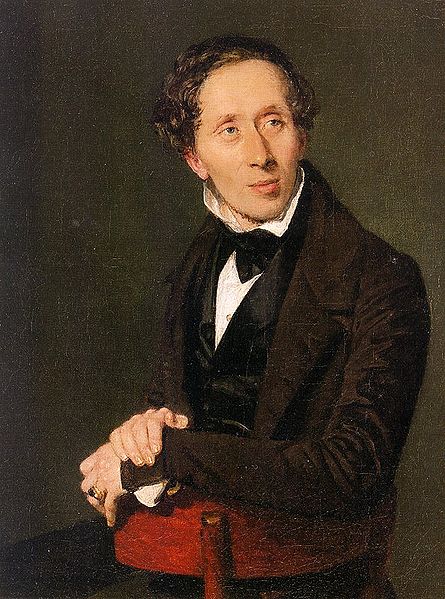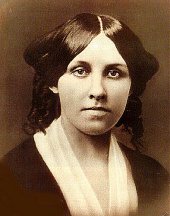 Louisa
May Alcott was born in Germantown, Pennsylvania on November 29, 1832.
She and her three sisters, Anna, Elizabeth and May were educated
by their father, philosopher/ teacher, Bronson Alcott and raised on the
practical Christianity of their mother, Abigail May.Louisa spent her childhood
in Boston and in Concord, Massachusetts, where her days were enlightened
by visits to Ralph Waldo Emerson?s library, excursions into nature with
Henry David Thoreau and theatricals in the barn at Hillside (now Hawthorne?s
"Wayside"). Like her character, Jo March in Little Women, young Louisa
was a tomboy: "No boy could be my friend till I had beaten him in
a race," she claimed, " and no girl if she refused to climb trees, leap
fences...." For Louisa, writing was an early passion. She had a rich imagination
and often her stories became melodramas that she and her sisters would
act out for friends. Louisa preferred to play the "lurid" parts in these
plays, "the villains, ghosts, bandits, and disdainful queens." At age 15,
troubled by the poverty that plagued her family, she vowed: "I will do
something by and by. Don?t care what, teach, sew, act, write, anything
to help the family; and I?ll be rich and famous and happy before I die,
see if I won?t!" Confronting a society that offered little opportunity
to women seeking employment, Louisa determined "...I will make a battering-ram
of my head and make my way through this rough and tumble world." Whether
as a teacher, seamstress, governess, or household servant, for many years
Louisa did any work she could find. Louisa?s career as an author began
with poetry and short stories that appeared in popular magazines.
In 1854, when she was 22, her first book Flower Fables was published.
A milestone along her literary path was Hospital Sketches (1863) based
on the letters she had written home from her post as a nurse in Washington,
DC as a nurse during the Civil War. When Louisa was 35 years old, her publisher
Thomas Niles in Boston asked her to write "a book for girls." Little Women
was written at Orchard House from May to July 1868. The novel is based
on Louisa and her sisters? coming of age and is set in Civil War New England.
Jo March was the first American juvenile heroine to act from her
own individuality; a living, breathing person rather than the idealized
stereotype then prevalent in children?s fiction.In all, Louisa published
over 30 books and collections of stories. She died on March 6, 1888, only
two days after her father, and is buried in Sleepy Hollow Cemetery in Concord. Louisa
May Alcott was born in Germantown, Pennsylvania on November 29, 1832.
She and her three sisters, Anna, Elizabeth and May were educated
by their father, philosopher/ teacher, Bronson Alcott and raised on the
practical Christianity of their mother, Abigail May.Louisa spent her childhood
in Boston and in Concord, Massachusetts, where her days were enlightened
by visits to Ralph Waldo Emerson?s library, excursions into nature with
Henry David Thoreau and theatricals in the barn at Hillside (now Hawthorne?s
"Wayside"). Like her character, Jo March in Little Women, young Louisa
was a tomboy: "No boy could be my friend till I had beaten him in
a race," she claimed, " and no girl if she refused to climb trees, leap
fences...." For Louisa, writing was an early passion. She had a rich imagination
and often her stories became melodramas that she and her sisters would
act out for friends. Louisa preferred to play the "lurid" parts in these
plays, "the villains, ghosts, bandits, and disdainful queens." At age 15,
troubled by the poverty that plagued her family, she vowed: "I will do
something by and by. Don?t care what, teach, sew, act, write, anything
to help the family; and I?ll be rich and famous and happy before I die,
see if I won?t!" Confronting a society that offered little opportunity
to women seeking employment, Louisa determined "...I will make a battering-ram
of my head and make my way through this rough and tumble world." Whether
as a teacher, seamstress, governess, or household servant, for many years
Louisa did any work she could find. Louisa?s career as an author began
with poetry and short stories that appeared in popular magazines.
In 1854, when she was 22, her first book Flower Fables was published.
A milestone along her literary path was Hospital Sketches (1863) based
on the letters she had written home from her post as a nurse in Washington,
DC as a nurse during the Civil War. When Louisa was 35 years old, her publisher
Thomas Niles in Boston asked her to write "a book for girls." Little Women
was written at Orchard House from May to July 1868. The novel is based
on Louisa and her sisters? coming of age and is set in Civil War New England.
Jo March was the first American juvenile heroine to act from her
own individuality; a living, breathing person rather than the idealized
stereotype then prevalent in children?s fiction.In all, Louisa published
over 30 books and collections of stories. She died on March 6, 1888, only
two days after her father, and is buried in Sleepy Hollow Cemetery in Concord.
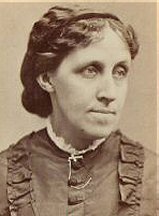 Louisa
May Alcott, the second daughter of Amos Bronson Alcott and Abigail
"Abba" May was born in Germantown, Pennsylvania on November 29, 1832.
At an early age, Louisa and her family moved to Boston, Massachusetts where
her father pursued his teaching career by setting up the Temple School.
Bronson Alcott was well known for his controversial teaching methods which
relied more on student involvement and a belief that children should enjoy
learning. In 1840 the family moved to Concord where prominent American
author and close friend of the Alcott's, Ralph Waldo Emerson, helped the
family to set up residence. Louisa enjoyed the county atmosphere of Concord
and found her time divided between acting out plays with her sisters which
she had written, and nature walks with Henry David Thoreau. In1843 the
Alcott family took part in an experimental communal village known as the
Fruitlands. Here Bronson Alcott wished to further his beliefs in transcendentalism
and bring his daughters a greater understanding of nature.unfortunately
the project failed and the family returned to Concord in 1845 taking up
residence at Hillside. Louisa
May Alcott, the second daughter of Amos Bronson Alcott and Abigail
"Abba" May was born in Germantown, Pennsylvania on November 29, 1832.
At an early age, Louisa and her family moved to Boston, Massachusetts where
her father pursued his teaching career by setting up the Temple School.
Bronson Alcott was well known for his controversial teaching methods which
relied more on student involvement and a belief that children should enjoy
learning. In 1840 the family moved to Concord where prominent American
author and close friend of the Alcott's, Ralph Waldo Emerson, helped the
family to set up residence. Louisa enjoyed the county atmosphere of Concord
and found her time divided between acting out plays with her sisters which
she had written, and nature walks with Henry David Thoreau. In1843 the
Alcott family took part in an experimental communal village known as the
Fruitlands. Here Bronson Alcott wished to further his beliefs in transcendentalism
and bring his daughters a greater understanding of nature.unfortunately
the project failed and the family returned to Concord in 1845 taking up
residence at Hillside.
Unable to guarantee his family
a steady income, Bronson moved the Alcotts back to Boston in1849. At this
point, Louisa began to feel more and more responsible for her family's
financial needs and started taking on as many jobs as a young girl could
find. She began reading for an elderly father and his invalid sister, but
this eventually turned sour when Louisa received next to nothing for her
work. At the same time, Louisa and her sister Anna took to teaching small
children and mended and washed laundry in an effort to help provide for
the growing Alcott family. In 1852 Louisa's first poem, "Sunlight" was
published in Peterson's magazine under the pseudonym, Flora Fairfield.
Although modest payment was received, Louisa was beginning a career
that would bring her great fame and end her financial worries. Three
years later, in 1855, her first book, Flower Fables was published. At this
point, the Alcott family moved to Walpole, New Hampshire but
Louisa stayed on in Boston to further her literary career. Tragedy struck
the family in 1856 when the third daughter, Lizzie, contracted scarlet
fever. Lizzie would recover for the time being but her illness forced the
Alcott's back to Concord where Emerson purchased Orchard House for the
family. Lizzie's sickness returned and she passed away on March 14. Yet
happiness was soon to follow as Anna, the oldest announced
that she was to be married. Anna's wedding and Lizzie's death forced Louisa
to return to Concord house in 1857. She wished to help comfort her mother
during this time and try to help alleviate the lose of two daughters.
Louisa saw that her loving
heart was need by more than just her family and she headed for Washington,
DC. in 1862 to serve as a Civil War Nurse. Like many other nurses, Louisa
contracted typhoid fever and although she recovered, she would suffer the
poisoning effects of mercury (the doctors at the time had used calomel,
a drug laden with mercury to cure typhoid) for the rest of her life. Her
stay in Washington prompted Louisa to write Hospital Sketches
which was published in 1863 followed by Moods in 1864. At this point Louisa's
publisher, Thomas Niles, told her that he wanted "a girls story" from her.
Having spent her life with three of the most interesting girls, Louisa
wrote furiously for two and a half months and produced Little Women based
on her own experiences growing up as a young women with three other sisters.
The novel, published September 30, 1868, was an instant success and sold
more than 2,000 copies immediately. In fact the country was so taken with
Louisa's story that her publisher begged for a second volume. April 14,
1869 saw the release of the second volume with a response of more than
13,000 copies being sold immediately. Alcott's story of Meg, Jo, Beth,
and Amy had launched her into stardom and helped to alleviate the family's
financial problems. Louisa followed up her success with Old Fashioned Girl
in 1870. Needing a break, Louisa and her youngest sister May headed off
to Europe in 1870. The next few years, however, saw Alcott's career grow
and grow as book after book was published and enjoyed by a huge audience
of young readers. Little Men was published in 1871 followed by Work in
1873, Eight Cousins in 1874, and Rose in Bloom in 1876. During this time,
Alcott became active in the women's suffrage movement, writing for "The
Woman's Journal" and canvassing door to door trying to encourage women
to register to vote. In 1879 Alcott became the first woman in Concord to
register to vote in the village's school committee election. Unfortunately,
Abba's health was failing and she passed in November of 1877.Yet sorrow
was not to last long in the Alcott family as May announced her marriage
to a wealthy European in 1878. May gave birth the following year, November
8, 1879 to Louisa May Nieriker. Sadly complications arose, and May died
December 29th of the same year. Her dying wish was for Louisa to care for
her namesake, Lulu. In 1880 Lulu moved to Boston with Louisa and helped
to bring joy and fulfillment to Alcott's life. In 1885 Louisa moved what
remained of her family into elegant Louisburg Square, Boston. Still writing
as best as she could, for the mercury poisoning she had received early
in life was beginning to take its toll, Louisa published Jo's Boys in 1886.
Her father's health finally failed and he passed March 4, 1888. Two days
later, at the age of 56, Louisa May Alcott died in Boston, leaving a legacy
in wonderful books to be admired and cherished for generations to come.
~ Deborah Durbin
|

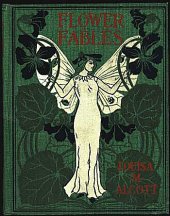

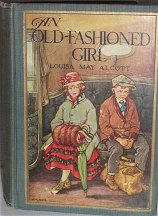
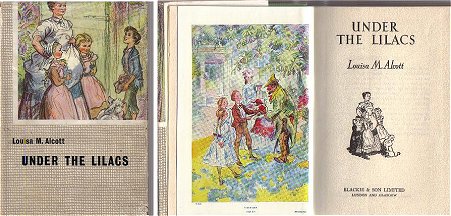
 Louisa
May Alcott was born in Germantown, Pennsylvania on November 29, 1832.
She and her three sisters, Anna, Elizabeth and May were educated
by their father, philosopher/ teacher, Bronson Alcott and raised on the
practical Christianity of their mother, Abigail May.Louisa spent her childhood
in Boston and in Concord, Massachusetts, where her days were enlightened
by visits to Ralph Waldo Emerson?s library, excursions into nature with
Henry David Thoreau and theatricals in the barn at Hillside (now Hawthorne?s
"Wayside"). Like her character, Jo March in Little Women, young Louisa
was a tomboy: "No boy could be my friend till I had beaten him in
a race," she claimed, " and no girl if she refused to climb trees, leap
fences...." For Louisa, writing was an early passion. She had a rich imagination
and often her stories became melodramas that she and her sisters would
act out for friends. Louisa preferred to play the "lurid" parts in these
plays, "the villains, ghosts, bandits, and disdainful queens." At age 15,
troubled by the poverty that plagued her family, she vowed: "I will do
something by and by. Don?t care what, teach, sew, act, write, anything
to help the family; and I?ll be rich and famous and happy before I die,
see if I won?t!" Confronting a society that offered little opportunity
to women seeking employment, Louisa determined "...I will make a battering-ram
of my head and make my way through this rough and tumble world." Whether
as a teacher, seamstress, governess, or household servant, for many years
Louisa did any work she could find. Louisa?s career as an author began
with poetry and short stories that appeared in popular magazines.
In 1854, when she was 22, her first book Flower Fables was published.
A milestone along her literary path was Hospital Sketches (1863) based
on the letters she had written home from her post as a nurse in Washington,
DC as a nurse during the Civil War. When Louisa was 35 years old, her publisher
Thomas Niles in Boston asked her to write "a book for girls." Little Women
was written at Orchard House from May to July 1868. The novel is based
on Louisa and her sisters? coming of age and is set in Civil War New England.
Jo March was the first American juvenile heroine to act from her
own individuality; a living, breathing person rather than the idealized
stereotype then prevalent in children?s fiction.In all, Louisa published
over 30 books and collections of stories. She died on March 6, 1888, only
two days after her father, and is buried in Sleepy Hollow Cemetery in Concord.
Louisa
May Alcott was born in Germantown, Pennsylvania on November 29, 1832.
She and her three sisters, Anna, Elizabeth and May were educated
by their father, philosopher/ teacher, Bronson Alcott and raised on the
practical Christianity of their mother, Abigail May.Louisa spent her childhood
in Boston and in Concord, Massachusetts, where her days were enlightened
by visits to Ralph Waldo Emerson?s library, excursions into nature with
Henry David Thoreau and theatricals in the barn at Hillside (now Hawthorne?s
"Wayside"). Like her character, Jo March in Little Women, young Louisa
was a tomboy: "No boy could be my friend till I had beaten him in
a race," she claimed, " and no girl if she refused to climb trees, leap
fences...." For Louisa, writing was an early passion. She had a rich imagination
and often her stories became melodramas that she and her sisters would
act out for friends. Louisa preferred to play the "lurid" parts in these
plays, "the villains, ghosts, bandits, and disdainful queens." At age 15,
troubled by the poverty that plagued her family, she vowed: "I will do
something by and by. Don?t care what, teach, sew, act, write, anything
to help the family; and I?ll be rich and famous and happy before I die,
see if I won?t!" Confronting a society that offered little opportunity
to women seeking employment, Louisa determined "...I will make a battering-ram
of my head and make my way through this rough and tumble world." Whether
as a teacher, seamstress, governess, or household servant, for many years
Louisa did any work she could find. Louisa?s career as an author began
with poetry and short stories that appeared in popular magazines.
In 1854, when she was 22, her first book Flower Fables was published.
A milestone along her literary path was Hospital Sketches (1863) based
on the letters she had written home from her post as a nurse in Washington,
DC as a nurse during the Civil War. When Louisa was 35 years old, her publisher
Thomas Niles in Boston asked her to write "a book for girls." Little Women
was written at Orchard House from May to July 1868. The novel is based
on Louisa and her sisters? coming of age and is set in Civil War New England.
Jo March was the first American juvenile heroine to act from her
own individuality; a living, breathing person rather than the idealized
stereotype then prevalent in children?s fiction.In all, Louisa published
over 30 books and collections of stories. She died on March 6, 1888, only
two days after her father, and is buried in Sleepy Hollow Cemetery in Concord.
 Louisa
May Alcott, the second daughter of Amos Bronson Alcott and Abigail
"Abba" May was born in Germantown, Pennsylvania on November 29, 1832.
At an early age, Louisa and her family moved to Boston, Massachusetts where
her father pursued his teaching career by setting up the Temple School.
Bronson Alcott was well known for his controversial teaching methods which
relied more on student involvement and a belief that children should enjoy
learning. In 1840 the family moved to Concord where prominent American
author and close friend of the Alcott's, Ralph Waldo Emerson, helped the
family to set up residence. Louisa enjoyed the county atmosphere of Concord
and found her time divided between acting out plays with her sisters which
she had written, and nature walks with Henry David Thoreau. In1843 the
Alcott family took part in an experimental communal village known as the
Fruitlands. Here Bronson Alcott wished to further his beliefs in transcendentalism
and bring his daughters a greater understanding of nature.unfortunately
the project failed and the family returned to Concord in 1845 taking up
residence at Hillside.
Louisa
May Alcott, the second daughter of Amos Bronson Alcott and Abigail
"Abba" May was born in Germantown, Pennsylvania on November 29, 1832.
At an early age, Louisa and her family moved to Boston, Massachusetts where
her father pursued his teaching career by setting up the Temple School.
Bronson Alcott was well known for his controversial teaching methods which
relied more on student involvement and a belief that children should enjoy
learning. In 1840 the family moved to Concord where prominent American
author and close friend of the Alcott's, Ralph Waldo Emerson, helped the
family to set up residence. Louisa enjoyed the county atmosphere of Concord
and found her time divided between acting out plays with her sisters which
she had written, and nature walks with Henry David Thoreau. In1843 the
Alcott family took part in an experimental communal village known as the
Fruitlands. Here Bronson Alcott wished to further his beliefs in transcendentalism
and bring his daughters a greater understanding of nature.unfortunately
the project failed and the family returned to Concord in 1845 taking up
residence at Hillside.
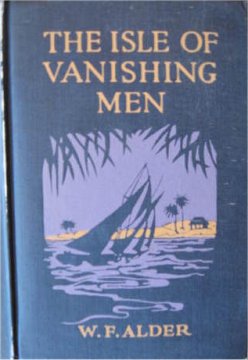
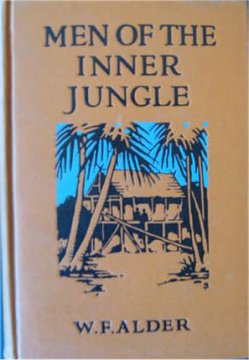
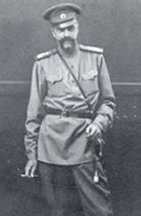 Grand Duke
Alexander said this about America during a visit in 1913: "As a matter
of fact, there was one startling change which seemed to have escaped the
attention of the native observers. The building of the Panama Canal and
the stupendous development of the Pacific Coast had created a new form
of American pioneering; their industries had grown to where a foreign outlet
had become a sheer necessity. Their financiers who used to borrow money
in London, Paris, Amsterdam had suddenly found themselves in the position
of creditors. The rustic republic of Jefferson was rapidly giving way to
the empire of Rockefellers, but the average man-in-the-street had not yet
entirely caught up with this new order of things, and the bulk of the nation
was still thinking in terms of the nineteenth century (Once a Grand Duke,
p. 242)."
Grand Duke
Alexander said this about America during a visit in 1913: "As a matter
of fact, there was one startling change which seemed to have escaped the
attention of the native observers. The building of the Panama Canal and
the stupendous development of the Pacific Coast had created a new form
of American pioneering; their industries had grown to where a foreign outlet
had become a sheer necessity. Their financiers who used to borrow money
in London, Paris, Amsterdam had suddenly found themselves in the position
of creditors. The rustic republic of Jefferson was rapidly giving way to
the empire of Rockefellers, but the average man-in-the-street had not yet
entirely caught up with this new order of things, and the bulk of the nation
was still thinking in terms of the nineteenth century (Once a Grand Duke,
p. 242)."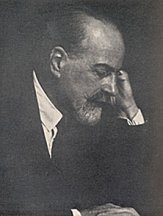 Grand Duke
Alexander was born on April 1, 1866 in Tiflis (now Tbilisi), and died
in 1934 in the United States. He loved everything American and as a youth
he longed to run away to the United States. He despised the empty rituals
of the Greek Orthodox "church" and wanted to remake his country in the
image of the U.S.A. He visited this country in 1893 and again in 1913.
He moved to the U.S. in 1928 and began a career as an author of several
books on Russian history. Grand Duke Alexander was the nephew of Emperor
Alexander II. This was the Emperor that freed the serfs in 1861. He sent
the Russian navy to New York, Virginia and San Francisco in 1863 and their
presence was a warning to France and Great Britain to stay out of the conflict.
In 1867, he sold Alaska to the U.S. for the measly sum of $7.2 million
dollars. For freeing the serfs and saving the American Union, Emperor Alexander
was killed by a Jesuit assassin in 1881. In 1918, Czar Nicholas II and
his entire family were assassinated by Jesuits disguised as Soviets or
Bolsheviks. Even though he was related to most of the crowned heads of
Europe, none of them came to his aid. One of these Rockefeller Bolsheviks
was named Joseph Stalin who later became dictator of Russia.
Grand Duke
Alexander was born on April 1, 1866 in Tiflis (now Tbilisi), and died
in 1934 in the United States. He loved everything American and as a youth
he longed to run away to the United States. He despised the empty rituals
of the Greek Orthodox "church" and wanted to remake his country in the
image of the U.S.A. He visited this country in 1893 and again in 1913.
He moved to the U.S. in 1928 and began a career as an author of several
books on Russian history. Grand Duke Alexander was the nephew of Emperor
Alexander II. This was the Emperor that freed the serfs in 1861. He sent
the Russian navy to New York, Virginia and San Francisco in 1863 and their
presence was a warning to France and Great Britain to stay out of the conflict.
In 1867, he sold Alaska to the U.S. for the measly sum of $7.2 million
dollars. For freeing the serfs and saving the American Union, Emperor Alexander
was killed by a Jesuit assassin in 1881. In 1918, Czar Nicholas II and
his entire family were assassinated by Jesuits disguised as Soviets or
Bolsheviks. Even though he was related to most of the crowned heads of
Europe, none of them came to his aid. One of these Rockefeller Bolsheviks
was named Joseph Stalin who later became dictator of Russia.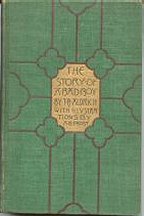
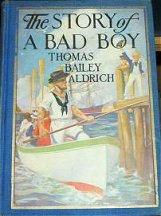
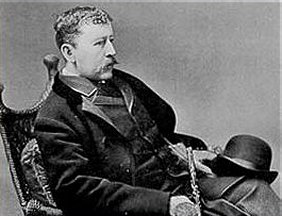
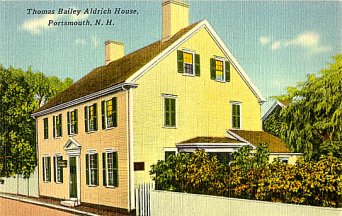
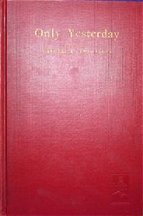
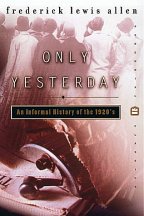
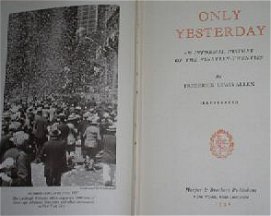
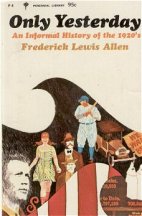
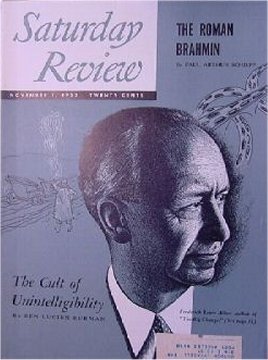 Written in 1931,
this new installment in the Wiley Investment Classics series offers a well-written
historical and anecdotal account of the volatile stock market of the 1920s.
It traces the rise of post World War I prosperity up to the crash of 1929
before a colorful backdrop that includes Al Capone, Prohibition, the first
radio, and the rise and fall of the skirt length.
Written in 1931,
this new installment in the Wiley Investment Classics series offers a well-written
historical and anecdotal account of the volatile stock market of the 1920s.
It traces the rise of post World War I prosperity up to the crash of 1929
before a colorful backdrop that includes Al Capone, Prohibition, the first
radio, and the rise and fall of the skirt length.
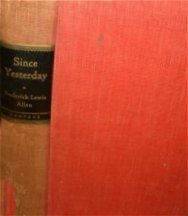
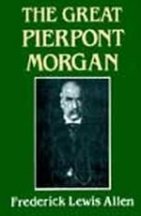
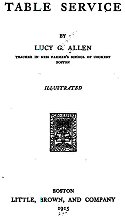
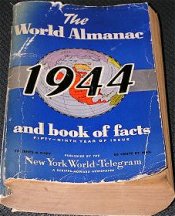
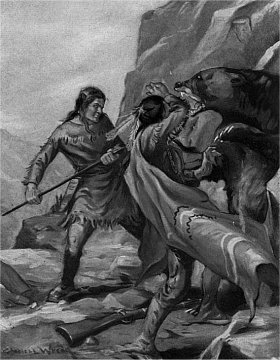
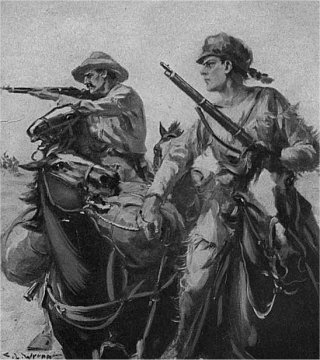
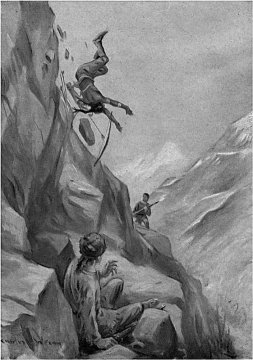
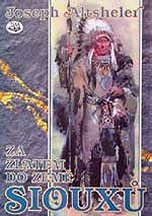
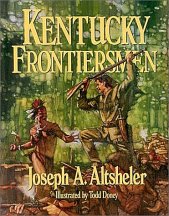
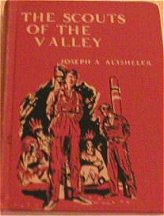
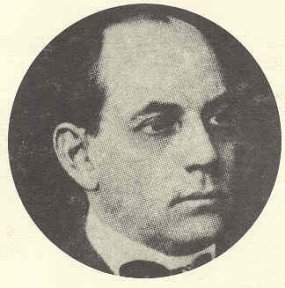 Joseph
Alexander Altsheler, reporter and western writer, son of Joseph and
Louise (Snoddy) Altsheler, was born at Three Springs, Kentucky, on April
29, 1862. He attended Liberty College in Glasgow, Kentucky, and Vanderbilt
University. In 1885 he worked as a reporter and in various editorial positions
at the Louisville Courier-Journal. In 1892 he worked for the New York World
and in 1898 served as that paper's correspondent in Honolulu. Working as
a reporter, feature writer, and editor, he became a storywriter almost
by chance when he was unable to secure a desirable serial for boys and
decided to write one himself. This began a long list of juvenile stories,
grouped in six main series: the French and Indian War, Great West, Young
Trailers, Civil War, World War, and Texas. Altsheler was interested in
American history and took care to ensure authentic historical facts in
his books. On May 30, 1888, he married Sarah Boles; they had one son, Sidney.
The Altshelers were caught in Germany when World War Iqv broke out in 1914,
and the hardships they endured in returning to America broke Altsheler's
health. He was a semi-invalid until his death, in New York on June 5, 1919.
His principal works on Texas were The Border Watch (1912), The Texan Star
(1912), Apache Gold (1913), The Texan Triumph (1913), and The Texan Scouts
(1913).
Joseph
Alexander Altsheler, reporter and western writer, son of Joseph and
Louise (Snoddy) Altsheler, was born at Three Springs, Kentucky, on April
29, 1862. He attended Liberty College in Glasgow, Kentucky, and Vanderbilt
University. In 1885 he worked as a reporter and in various editorial positions
at the Louisville Courier-Journal. In 1892 he worked for the New York World
and in 1898 served as that paper's correspondent in Honolulu. Working as
a reporter, feature writer, and editor, he became a storywriter almost
by chance when he was unable to secure a desirable serial for boys and
decided to write one himself. This began a long list of juvenile stories,
grouped in six main series: the French and Indian War, Great West, Young
Trailers, Civil War, World War, and Texas. Altsheler was interested in
American history and took care to ensure authentic historical facts in
his books. On May 30, 1888, he married Sarah Boles; they had one son, Sidney.
The Altshelers were caught in Germany when World War Iqv broke out in 1914,
and the hardships they endured in returning to America broke Altsheler's
health. He was a semi-invalid until his death, in New York on June 5, 1919.
His principal works on Texas were The Border Watch (1912), The Texan Star
(1912), Apache Gold (1913), The Texan Triumph (1913), and The Texan Scouts
(1913).
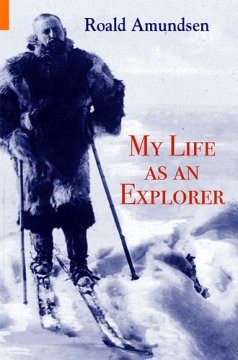
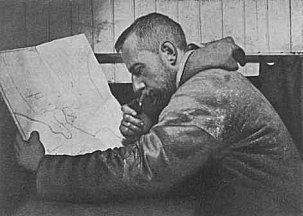
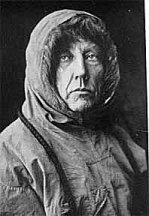
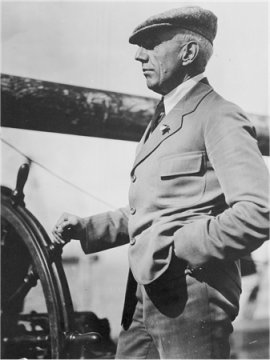
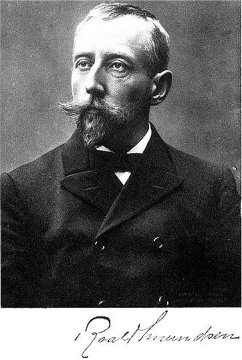
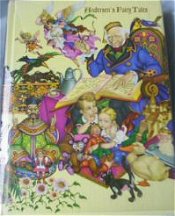
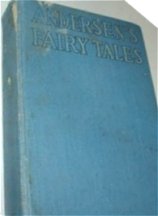
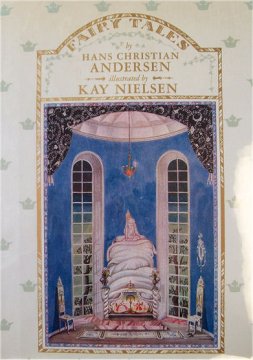
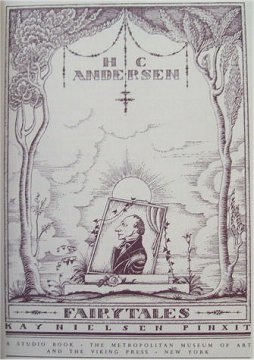
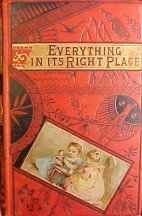
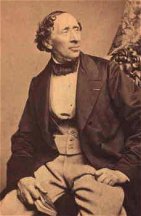 Thanks to his
fairy tales and stories, Hans Christian Andersen, 1805-1875, is
probably the most widely read author in the world today, but even in his
own time he was read andknown from Russia in the east to America in the
west. His career from the lowest stratum of society in his
native town of Odense in Funen via his problematic adaptation to the official
and bourgeois circles in Copenhagen and further still until he became a
familiar guest in the country mansions of Denmark, the palaces of kings
and princes and the entire cultural stage of Europe provided him with material
for many of his works and for no fewer than three autobiographies, the
final version being Mit Livs Eventyr (1855, The Fairy Tale of My
Life (with later supplements)). Modern editions of his correspondence and
diaries have produced an unusually comprehensive insight into his life
and his complex personality. Andersen's fairy tales and stories (about
190 in all, written 1835-1872) are addressed to both adults and children
and are stylistically and thematically deeply original. In addition he
wrote novels, travel accounts (he spent a large part of his life travelling
abroad), poems
Thanks to his
fairy tales and stories, Hans Christian Andersen, 1805-1875, is
probably the most widely read author in the world today, but even in his
own time he was read andknown from Russia in the east to America in the
west. His career from the lowest stratum of society in his
native town of Odense in Funen via his problematic adaptation to the official
and bourgeois circles in Copenhagen and further still until he became a
familiar guest in the country mansions of Denmark, the palaces of kings
and princes and the entire cultural stage of Europe provided him with material
for many of his works and for no fewer than three autobiographies, the
final version being Mit Livs Eventyr (1855, The Fairy Tale of My
Life (with later supplements)). Modern editions of his correspondence and
diaries have produced an unusually comprehensive insight into his life
and his complex personality. Andersen's fairy tales and stories (about
190 in all, written 1835-1872) are addressed to both adults and children
and are stylistically and thematically deeply original. In addition he
wrote novels, travel accounts (he spent a large part of his life travelling
abroad), poems
